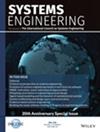Multi‐objective approach to forecast design refresh time due to COTS obsolescence
IF 1.6
3区 工程技术
Q4 ENGINEERING, INDUSTRIAL
引用次数: 0
Abstract
The purpose of this study is to provide program managers and systems engineers with a novel algorithm in determining the design refresh time (DRT) of sustainment‐dominated systems due to COTS obsolescence. Most of the research done so far has focused on cost optimization. The main contribution of the study is two‐fold. First, besides cost optimization, we have introduced efficiency optimization within a balanced approach to determine the DRT, under multiple objectives. Second, we used a set‐based approach over the hypervolume quality values of solutions rather than population‐based Pareto solutions. We proposed a discrete‐time simulation model by using Multi‐Objective Evolutionary Algorithms where the deterioration over the quality values of Pareto solution sets is used as an indicator for a DRT. We supported the proposed mathematical model in theory with empirical findings from a case study for a sustainment‐dominated Naval Command and Control System that was designed in 2004 and deployed in 2007. We ran the simulation as for 2007 and conducted an analysis over the cost and operational efficiency objectives to compare the situation experienced in real life against the simulation outputs of the proposed model. The results revealed that not only the total life cycle cost but also efficient operational sustainability of a system would be increased significantly if the system had gone through design refreshes as proposed by the model. We showed that the deterioration of the Pareto optimal solutions’ hypervolume quality values over time is an effective marker to decide the optimal DRT under conflicting multiple objectives.预测COTS过时导致的设计刷新时间的多目标方法
本研究的目的是为项目经理和系统工程师提供一种新的算法来确定由于COTS过时而导致的维持主导系统的设计刷新时间(DRT)。迄今为止所做的大多数研究都集中在成本优化上。这项研究的主要贡献有两个方面。首先,除了成本优化之外,我们还引入了在多目标下确定DRT的平衡方法中的效率优化。其次,我们对解决方案的超大体积质量值使用了基于集合的方法,而不是基于种群的帕累托解决方案。我们通过使用多目标进化算法提出了一个离散时间仿真模型,其中Pareto解集质量值的退化被用作DRT的指标。我们从理论上支持了所提出的数学模型,并从2004年设计并于2007年部署的以维持为主的海军指挥与控制系统的案例研究中获得了实证结果。我们在2007年进行了模拟,并就成本和运作效率目标进行了分析,将现实生活中的情况与建议模型的模拟结果进行比较。结果表明,如果系统按照模型建议进行设计更新,不仅可以显著提高系统的总生命周期成本,还可以显著提高系统的有效运行可持续性。研究表明,在多目标冲突情况下,Pareto最优解的超容积质量值随时间的退化是决定最优DRT的有效标志。
本文章由计算机程序翻译,如有差异,请以英文原文为准。
求助全文
约1分钟内获得全文
求助全文
来源期刊

Systems Engineering
工程技术-工程:工业
CiteScore
5.10
自引率
20.00%
发文量
0
审稿时长
6 months
期刊介绍:
Systems Engineering is a discipline whose responsibility it is to create and operate technologically enabled systems that satisfy stakeholder needs throughout their life cycle. Systems engineers reduce ambiguity by clearly defining stakeholder needs and customer requirements, they focus creativity by developing a system’s architecture and design and they manage the system’s complexity over time. Considerations taken into account by systems engineers include, among others, quality, cost and schedule, risk and opportunity under uncertainty, manufacturing and realization, performance and safety during operations, training and support, as well as disposal and recycling at the end of life. The journal welcomes original submissions in the field of Systems Engineering as defined above, but also encourages contributions that take an even broader perspective including the design and operation of systems-of-systems, the application of Systems Engineering to enterprises and complex socio-technical systems, the identification, selection and development of systems engineers as well as the evolution of systems and systems-of-systems over their entire lifecycle.
Systems Engineering integrates all the disciplines and specialty groups into a coordinated team effort forming a structured development process that proceeds from concept to realization to operation. Increasingly important topics in Systems Engineering include the role of executable languages and models of systems, the concurrent use of physical and virtual prototyping, as well as the deployment of agile processes. Systems Engineering considers both the business and the technical needs of all stakeholders with the goal of providing a quality product that meets the user needs. Systems Engineering may be applied not only to products and services in the private sector but also to public infrastructures and socio-technical systems whose precise boundaries are often challenging to define.
 求助内容:
求助内容: 应助结果提醒方式:
应助结果提醒方式:


